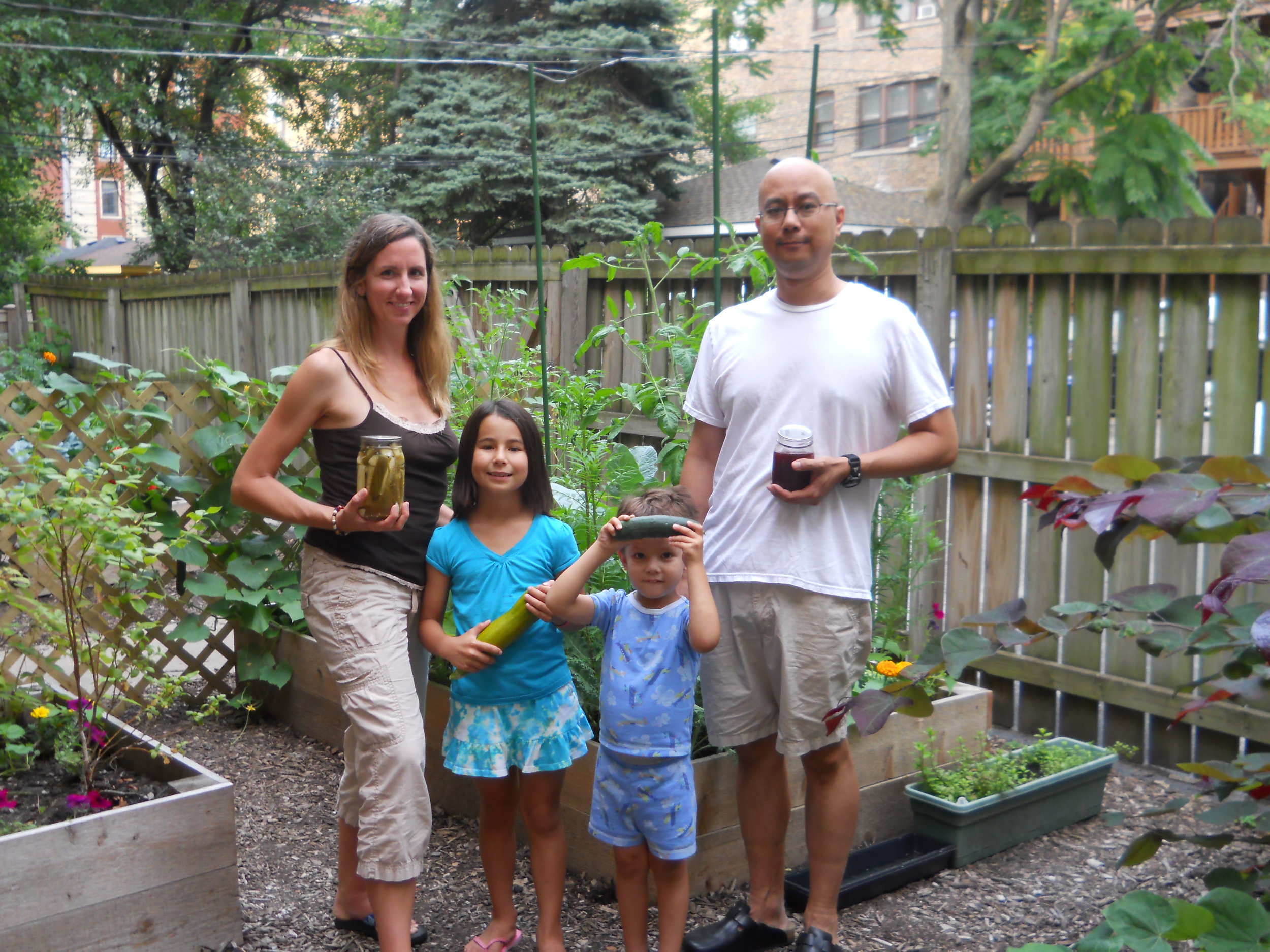Ever since she was a child, Lisa Kozinski, owner of an Oak Park condo you can visit on the 2013 Green Living & Learning Tour on September 28, has entertained thoughts some of us might be afraid to face, such as, “What if the water stopped running through the pipes? How would we get water then?” As she got older, that line of thinking “intensified” when she fed the thoughts with research, films, and books such as Barbara Kingsolver’s Animal, Vegetable, Miracle: A Year of Food Life. From Kingsolver’s book (summarized at bottom), Lisa was led to read others in which authors shared their similar beliefs, that “we are heading for a time when going to a fully-stocked grocery store in any season will become a thing of the past,” she said, adding, “We need to equip ourselves with the skills it will take to survive when such a time occurs.” Lisa has found this kind of thinking “oddly comforting” – primarily because it confirmed her earlier thoughts and gave them framework and purpose. She says she felt a sense of urgency to make the changes in her life that would address these ideas.
 First and foremost, Lisa (pictured at left in her garden with her family) decided to use the “tiny bit of useless backyard behind [her] six-flat” to grow some of her own food. It took some planning, as it was nothing more than a muddy patch of land where, she reports, “nothing would grow and was used mostly as a dog run”. When the dog (and the neighbor) moved out, Lisa seized her chance, digging drainage ditches and spreading mulch over the top with other neighbors in the building. "We then built four raised beds and filled them with soil," she said. "At the same time, I had to figure out what I could even grow in my backyard, since my readings suggested that any garden with less than six hours of direct sunlight would not produce anything. As I observed the sunlight patterns, we were lucky if we got three-to-four hours of direct light a day. I was undaunted, however, and decided to try a variety of greens, tomatoes, cucumbers, beans and even some berries. As with any experiment, not all of the plants have thrived, but many have done so well, that I now pronounce my garden a success.”
First and foremost, Lisa (pictured at left in her garden with her family) decided to use the “tiny bit of useless backyard behind [her] six-flat” to grow some of her own food. It took some planning, as it was nothing more than a muddy patch of land where, she reports, “nothing would grow and was used mostly as a dog run”. When the dog (and the neighbor) moved out, Lisa seized her chance, digging drainage ditches and spreading mulch over the top with other neighbors in the building. "We then built four raised beds and filled them with soil," she said. "At the same time, I had to figure out what I could even grow in my backyard, since my readings suggested that any garden with less than six hours of direct sunlight would not produce anything. As I observed the sunlight patterns, we were lucky if we got three-to-four hours of direct light a day. I was undaunted, however, and decided to try a variety of greens, tomatoes, cucumbers, beans and even some berries. As with any experiment, not all of the plants have thrived, but many have done so well, that I now pronounce my garden a success.”
At last year’s Green Living and Learning Tour, Lisa took a pledge to start canning. While she knew “nothing” about how to do it, she says she “could hardly wait for the spring and summer to arrive.” She is pleased to be canning her own jams, tomatoes and pickles, knowing that she would be able to use them all year long without fear of BPA and knowing that what she preserves comes from local farmers in season. “I still have a lot to learn, and each year I will take something new away, trying new recipes and methods and tweaking them to my taste buds. It has been an adventure that I look forward to continuing each and every summer!”
Visit Lisa, her family and the garden in back of their condo during the Green Living & Learning Tour in Oak Park and River Forest on Sept. 28th. After checking out the raised bed gardens, composting and rain barrel in the tiny back yard, visitors can head upstairs where Lisa will be discussing various methods of home food preservation, including canning and fermentation. Under the umbrella of canning, we will talk about making fruit jams and pickling vegetables. As for the far more ancient method of lacto-fermentation, we will discuss how to make milk kefir, yogurt, and fermented vegetables, such as pickles and sauerkraut. There are many nutritional as well as environmental benefits to both of these methods of home food preservation.
For more information about the event, including registration information for all 18 sites, visit the tour page at Green Community Connections.

Since its release in May 2007, Animal Vegetable, Miracle has helped launch a modern transition in America’s attitudes toward food. In this lively account of a family’s locavore year on their farm in Southern Appalachia, Barbara Kingsolver and her coauthors unearth the secret lives of vegetables and the unexpected satisfactions of knowing their food producers — and sometimes their dinner — on a first-name basis. Animal, Vegetable, Miracle: A Year of Food Life makes a passionate case for putting the kitchen back at the center of family life and diversified farms at the center of the American diet. - from the book’s website

